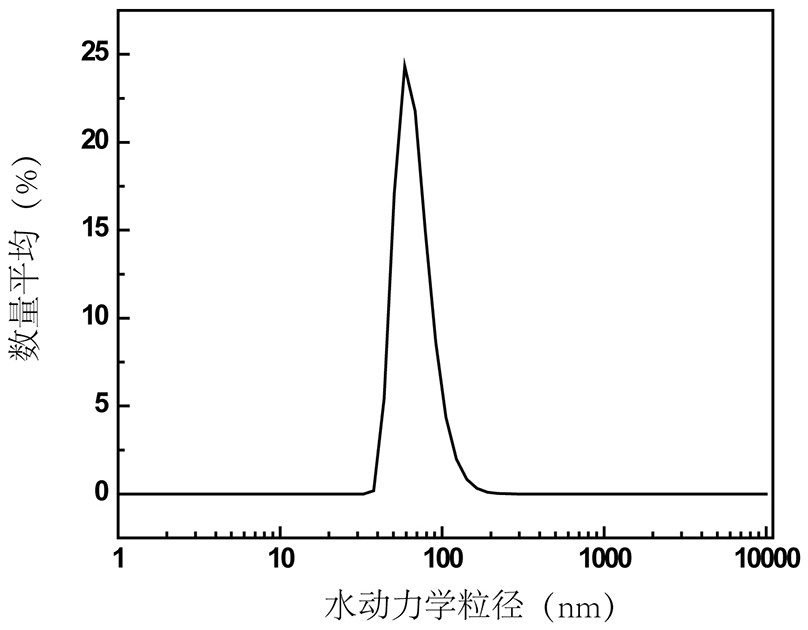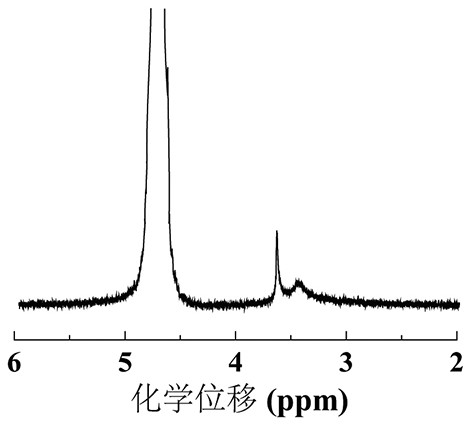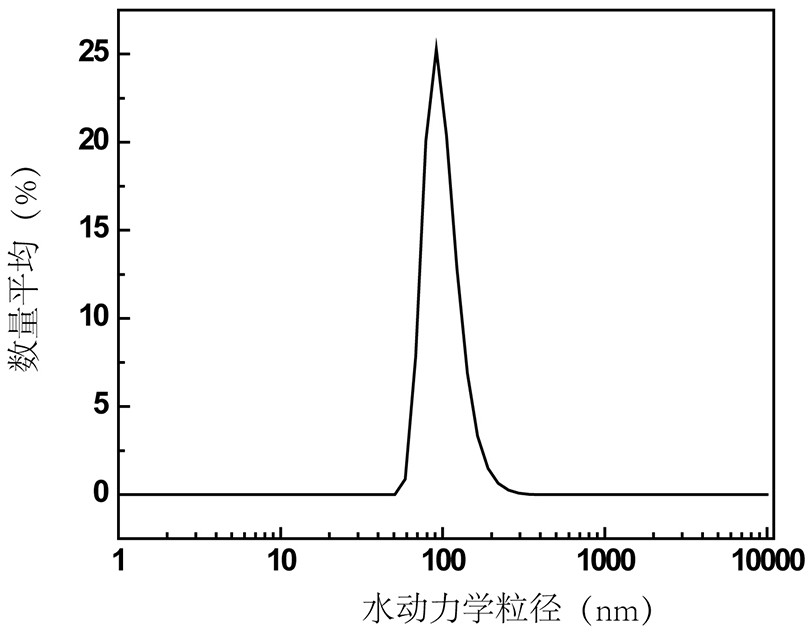Preparation method and application of of polyethylene glycol polydopamine-gold nanoparticles
A kind of polyethylene glycol polydopamine, polydopamine nanotechnology, applied in nanotechnology, nanotechnology, nanomedicine and other directions, can solve the problem of not finding polyethylene glycol polydopamine-gold nanoparticles, etc., to achieve good uniformity of morphology Sexuality and oxygen production capacity, mild effect of the preparation process
- Summary
- Abstract
- Description
- Claims
- Application Information
AI Technical Summary
Problems solved by technology
Method used
Image
Examples
Embodiment 1
[0031] Add 90 mL of ultrapure water, 40 mL of absolute ethanol, and 2-3 mL of ammonia water (28%-30%) into a 250 mL round-bottomed flask in sequence, then place the flask on a magnetic heating stirrer and heat and stir in a water bath for 10 min. A homogeneous solution was formed. 10 mL of 50 mg / mL dopamine hydrochloride (DA) solution was quickly added to the above solution, and reacted for 12-24 h to obtain a dispersion of polydopamine nanoparticles. Then centrifuge (16000 r / 10 min) and wash with water three times to obtain polydopamine PDA nanoparticle dispersion, which is stored at 4°C.
[0032] The results of the laser particle size analyzer (DLS) test showed the hydrodynamic size and uniformity of the obtained polydopamine (PDA) nanoparticles. Refer to the attached figure 1 . The average size of polydopamine (PDA) nanoparticles is 83.64±24.94 nm, and the monodispersity is 0.13±0.05.
Embodiment 2
[0034] Take 2.222 mL of polydopamine nanoparticle dispersion from Example 1, add 11.778 mL of ultrapure water to 2.222 mL of polydopamine nanoparticles (4.5 mg / mL), stir on a magnetic stirrer, and then add 4 mL 50 mM tris buffer, and finally 2 mL of 10 mg / mL mPEG-NH 2 solution was added to the solution. After reacting for 24 h, centrifuge (16000 r / 10 min) and wash with water three times to obtain PDA-PEG nanoparticles, which were stored at 4 °C.
[0035] 1 The H NMR spectrum indicates the chemical environment and type of hydrogen atoms in each component. Refer to the attached figure 2 . 1 The H NMR spectrum shows that a new peak appears at about 3.5 ppm compared with PDA NPs, which can be attributed to the −CH 2 − Proton-related chemical shifts, indicating successful modification with PEG.
Embodiment 3
[0037] Take 0.769 mL of PDA-PEG nanoparticles (6.5 mg / mL) prepared in Example 2, add 8.758 mL of ultrapure water and stir on a magnetic stirrer, then add 0.3 mL of chloroauric acid solution (10 mg / mL) After 15 min, 0.173 mL of sodium borohydride solution (5 mg / mL) was added. After continuing to stir for 2 h, the product was centrifuged (8000 r / 10 min) and washed with water. Thus, polyethylene glycol polydopamine-gold nanoparticles PDA-PEG-Au can be obtained.
[0038] Laser particle size analyzer (DLS) test results show the hydrodynamic size and uniformity of the obtained nanoparticles. Refer to the attached image 3. The average size of PDA-PEG-Au nanoparticles is 107.60±10.52 nm, and the monodispersity is 0.12±0.06.
PUM
| Property | Measurement | Unit |
|---|---|---|
| concentration | aaaaa | aaaaa |
| size | aaaaa | aaaaa |
| size | aaaaa | aaaaa |
Abstract
Description
Claims
Application Information
 Login to View More
Login to View More - R&D
- Intellectual Property
- Life Sciences
- Materials
- Tech Scout
- Unparalleled Data Quality
- Higher Quality Content
- 60% Fewer Hallucinations
Browse by: Latest US Patents, China's latest patents, Technical Efficacy Thesaurus, Application Domain, Technology Topic, Popular Technical Reports.
© 2025 PatSnap. All rights reserved.Legal|Privacy policy|Modern Slavery Act Transparency Statement|Sitemap|About US| Contact US: help@patsnap.com



